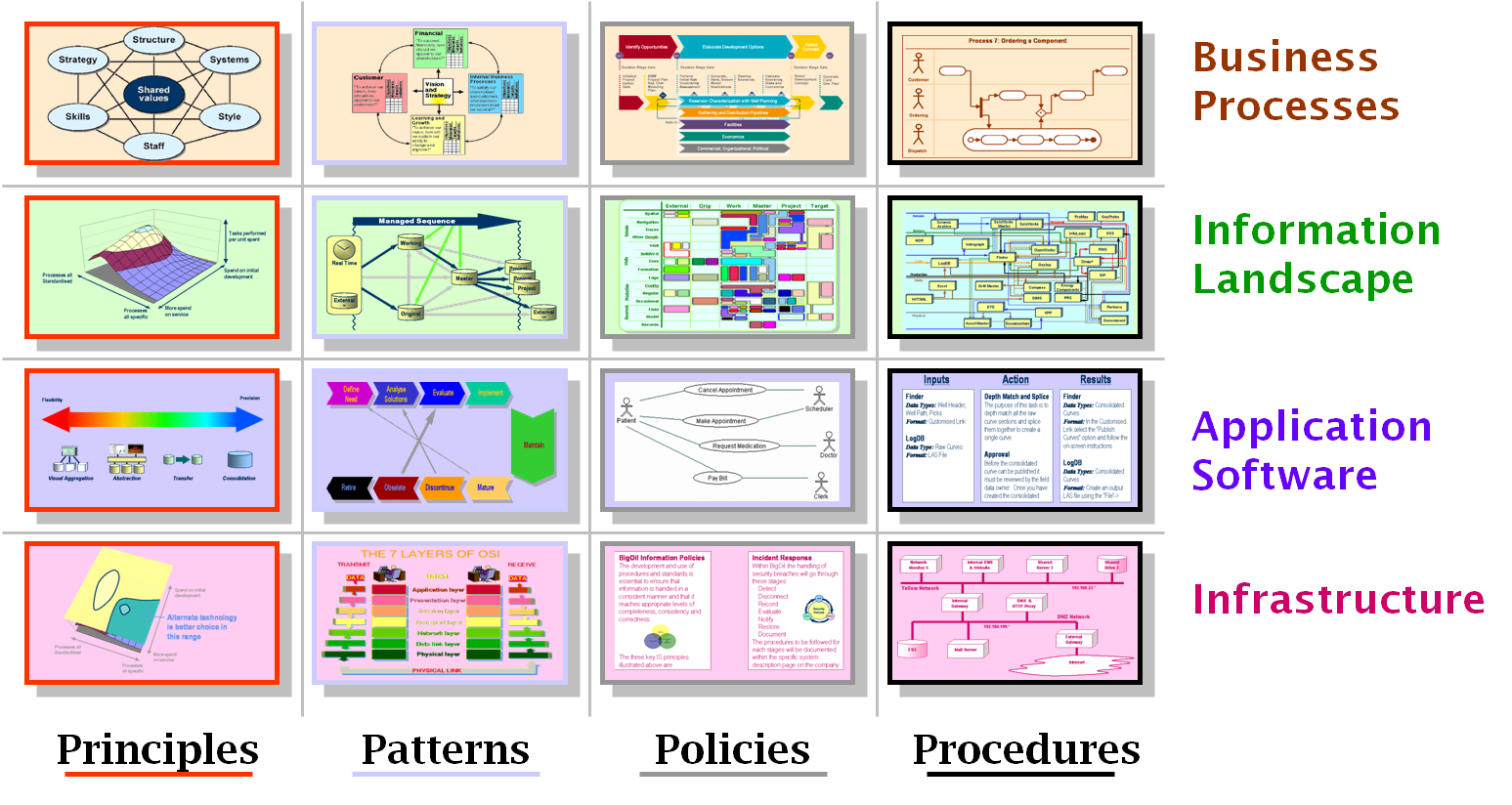 |
| Music |
| Computing |
| Info Arch |
| Theory |
| Practice |
| Glossary |
| Index |
Enterprise Architecture |
|
The documents and diagrams that describe the structure of a business, the methods and techniques that are employed to create and maintain such material
The architecture of an enterprise exists, whether it is described or not. Certainly, the business practice of enterprise architecture has emerged to make the system structures explicit in abstract architecture descriptions. Practitioners are called "enterprise architects".
There are a wide variety of different approaches to the discipline, a simple one that has proved effective is to consider the different Horizon of Concern and how they relate to the information handling systems in the organisation:

The four different information handling disciplines: Business Process, Data Management, Application Software and Infrastructure. Each of these has a different set of stakeholders and a different impact on the performance of the business. Each one can then be described in terms of the principles, patterns, policies, and procedures employed. A distinct set of diagram forms is then effective for describing and discussing each of the above intersections.
Relation to Information Architecture
Often the executives feel that improving their monitoring of the business will lead to an increase in efficiency. However since they do not wish to get overwhelmed by detail they have to obtain meaningful summaries of the complex activities within their organisation. This Business Intelligence must balance out the need to distil meaning, so the user is not swamped, with the need to extract valuable metrics, rather than lumping too many things together.
This requires an effective Information Architect, although they might not call themselves by that name.
Links to this page
The following pages link to here: Information Architecture, Unified Modeling Language, Uses for IA